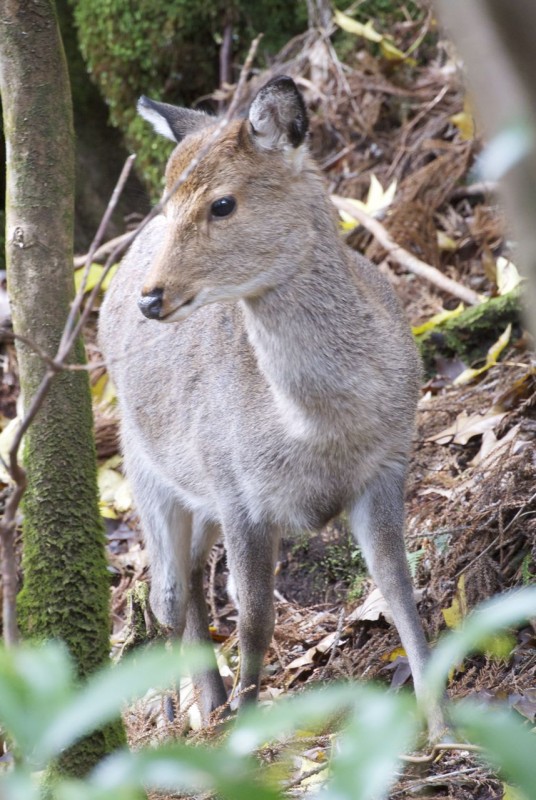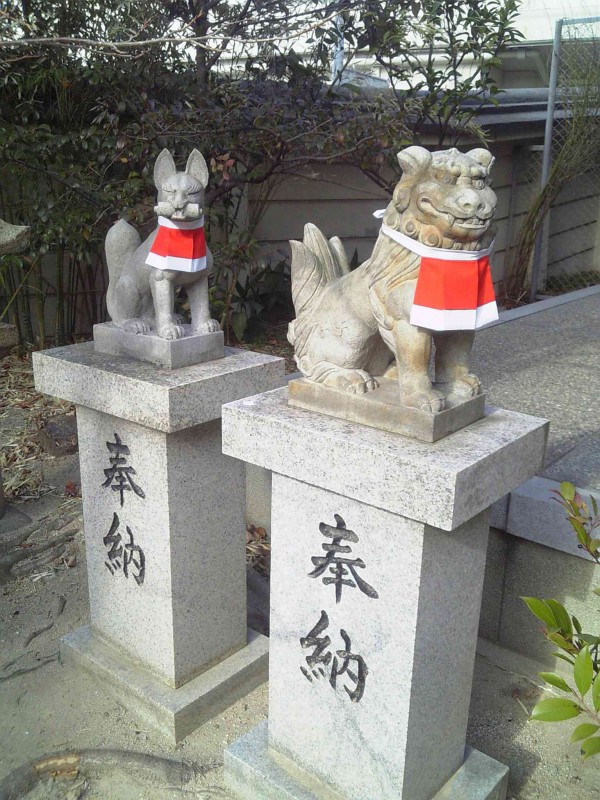Okuchimakami: The spirit wolves of the Kanto Mountains
By Kevin Short / Special to The Japan News

By Kevin Short / Special to The Japan News
Up close, however, I was surprised to see that the sacred stone was not dedicated to Inari, but instead commemorated a pilgrimage undertaken to the Mitsumine Mountains. Mitsumine, or “Three-peak Mountain,” is a general term referring to a rugged chain in the Chichibu-Sanchi Range, at the headwaters of the Arakawa river in western Saitama Prefecture.
The Mitsumine Mountains, along with Mt. Takao, Mt. Tsukuba, Mt. Oyama and Mt. Mitake, comprise the Kanto region’s premier Reizan, or “Spirit Mountains.” Since ancient times people have made pilgrimages to these mountains, hoping to obtain special blessings and spiritual contentment. More hard-core ascetics, known as yamabushi or shugenja, often spend long periods in the mountains, praying, fasting, running up and down the slopes, and standing underneath thundering waterfalls.
Mitsumine Shrine, located just below Myohogadake at the northern edge of the chain, is the main shrine serving the Mitsumine Mountains. According to legend, this shrine was founded about 2,000 years ago by the great hero Yamato Takeru, a son of Emperor Keiko.
Takeru had been dispatched from the capital in the Nara Basin to subdue the rebellious Emishi tribes in the northern Kanto and Tohoku regions. He had completed his mission and was heading back home when he became ensorcelled and lost his way in the mountains. Some wolves appeared from the forest and guided him to safety. Since then, wolves have been considered to be the familiar spirits of the Mitsumine Mountains.
This meant that the doglike stone guardians in front of the little sub-shrine were not foxes at all, but Japanese wolves. Carvings on the pilgrimage stone indicate a dedication date of 1844. At that time, there were still wolves all over Japan. The Japanese wolf or nihon-okami was long considered to be an endemic species different from the familiar gray wolf of Eurasia and North America (C. lupus). Recent genetic research, however, has shown that the Japanese wolves were actually a subspecies of the gray wolf.
The Japanese wolves probably entered the islands from the Korean Peninsula during the last glacial epoch, when sea levels were lower than today and the Tsushima Strait was much narrower. Later, when sea levels rose, the island populations were isolated from those on the continent. As is the case with black bear, wild boar and many of Japan’s native mammals, the isolated island forms became reduced in size.

Like other island mammals, the Yakushima deer is smaller than on the mainland.
The Japanese wolf was once widespread on the islands of Honshu, Kyushu and Shikoku, with a separate subspecies, the ezo-okami on Hokkaido. Unfortunately, the wolves began disappearing rapidly when modern traps and hunting rifles were introduced in the late 19th century. The last confirmed observation of a Japanese wolf was a young male killed by hunters in Nara Prefecture in 1905. The Ezo-okami as well was extinct before the turn of the century.
Only six confirmed taxidermy specimens of the Japanese wolf survive today. Three of these are in Japan. One is on permanent display at the National Science Museum in Ueno Park. This specimen is arranged alongside a North American coyote, and the two canids appear to be of about the same size and build.
The spirit wolves of the Kanto Mountains, known as Okuchimakami, are revered by farmers, who believe that a wolf charm will keep deer, wild boar and other destructive animals out of their fields. A charm placed at the entrance to a home is also thought to ward off burglars and prevent fires. In the past villages would pool their resources to send a delegation on a pilgrimage to Mitsumine to offer prayers and bring back charms. This stone most likely commemorates such a pilgrimage.
Short is a naturalist and cultural anthropology professor at Tokyo University of Information Sciences.


What an interesting article. I wasn’t aware that wolves had been so widespread in Japan in recent times. As an island that was cut off from ‘mainland’ Australia by rising sea-levels, Tasmania also has distinct fauna. It has lost a sub-species of the Emu in recent times, and of course the more well known Tasmanian Tiger (although some believe it still persists in remote areas). These examples show how quickly things can change.